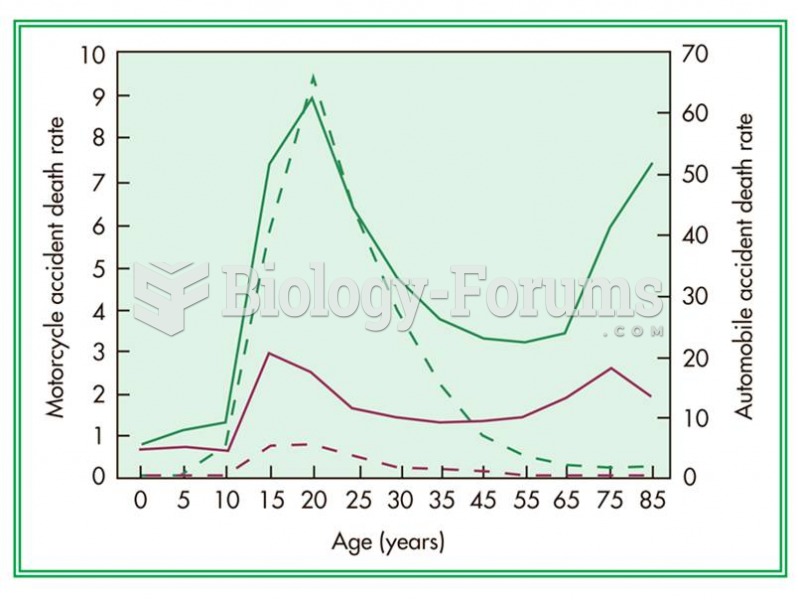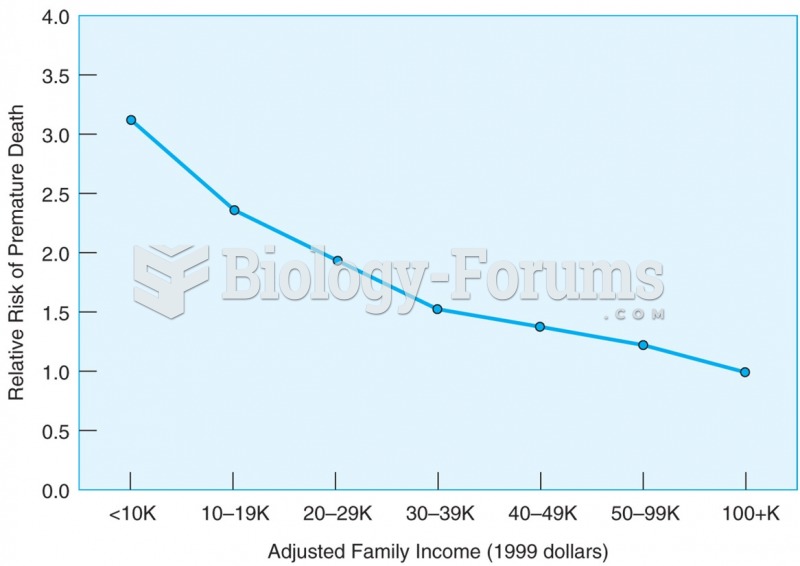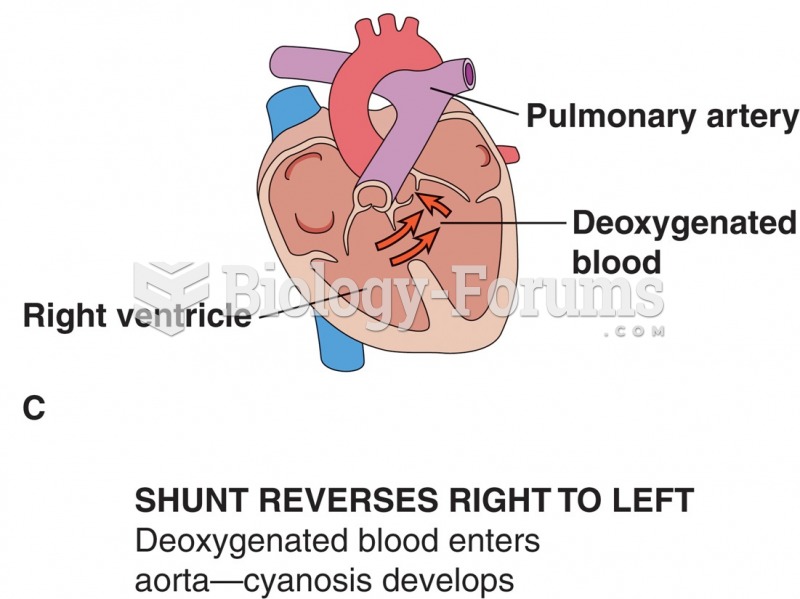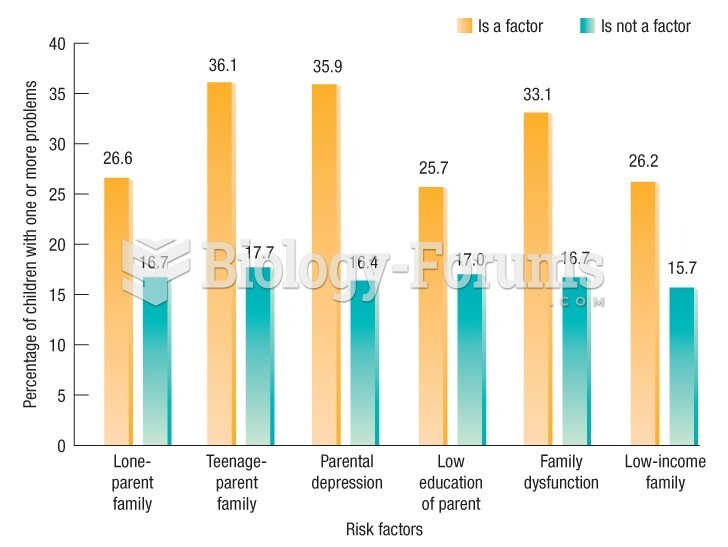|
|
|
Limit intake of red meat and dairy products made with whole milk. Choose skim milk, low-fat or fat-free dairy products. Limit fried food. Use healthy oils when cooking.
If all the neurons in the human body were lined up, they would stretch more than 600 miles.
Excessive alcohol use costs the country approximately $235 billion every year.
The familiar sounds of your heart are made by the heart's valves as they open and close.
The cure for trichomoniasis is easy as long as the patient does not drink alcoholic beverages for 24 hours. Just a single dose of medication is needed to rid the body of the disease. However, without proper precautions, an individual may contract the disease repeatedly. In fact, most people develop trichomoniasis again within three months of their last treatment.
 Risk of death from motorcycle accidents (dashed lines) and passenger accidents (solid lines) per 100
Risk of death from motorcycle accidents (dashed lines) and passenger accidents (solid lines) per 100
 The primary ignition system is used to trigger and therefore create the secondary (high-voltage) ...
The primary ignition system is used to trigger and therefore create the secondary (high-voltage) ...





